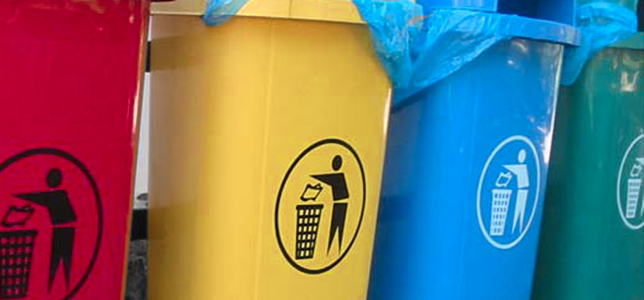A bunch of labels with green letters and nature motifs. That's all sustainability appears to be.
I consider myself a sustainability advocate, but the explosion of vague claims and misleading marketing has me empathizing with the companies that choose to just leave it alone. Unfortunately, they're likely missing out.
The truth is that there is a market for green products, and it's growing.
The Market for Sustainable Products
Sustainable products give me the warm-and-fuzzies, but the bottom line is that if the market doesn't approve, the product is a giant failure.
So how does the market feel?
Business-to-Business Markets
In 2009, Terrachoice (of McKinsey's "Helping 'Green' Products Grow") published their EcoMarkets 2009 Report. The report is a compilation of responses from 587 professional purchasers on the state and future of green B2B purchasing. You can check out the 26-page report when you've got an hour to kill, but check out these highlights:
- Most purchasers see no difference in performance between green and traditional products.
- Four out of five purchasers who consider our economy in a "recession" anticipate an increase in green purchasing in their companies.
- Three out of four purchasers who consider our economy in a "depression" anticipate an increase in green purchasing in their companies.
- Purchasers of electronics deem the importance of take-back programs second only to energy efficiency.
Consumer Markets
Terrachoice also recently published a report geared toward consumer products. "The Greenwashing Report" (another 26-pager) looks at green claims made by manufacturers. A few highlights:
- More green products are on the market.
- More products are making green claims, but most (98% of products) are deceptive.
- 80% of the time deception takes the form of hiding tradeoffs, showing no proof, or being vague.
- Legitimate eco-labeling has nearly doubled in the past year.
If I were to sum up the three reports in one sentence it would be this:
Even in the current economy, people are willing to pay a premium for sustainable products that function as well as their traditional counterparts.
They just don't want to be duped.
Tapping the Sustainability Market
Make a great sustainable product and be honest about it. Trust is what loosens purse strings (just ask Chris Brogan). Purchasers and consumers alike are (rightfully) becoming more and more wary of green claims.
Low-class tricks like stamping product with "No CFCs!" (they're illegal, of course you aren't using them) or the logo of your company's own internal "green team" (not-so-subtly implying 3rd-party certification) will damage your reputation in the not-so-long run.
Instead of trying (read: failing) to make a quick buck, take advantage of the current situation. The marketplace is increasingly populated with enlightened consumers and misleading products. It's an opportunity to gain the trust of would-be-buyers.
Just do the work. Develop a product that's sustainable, and then prove it.
What's Sustainable Enough?
"Greening" a product is not inherently expensive. It's your customers that determine how far you need to go.
If you cater to the hemp-and-granola set, they might demand everything be made of recycled cardboard. If you're courting hospital purchasers, they might be more accommodating to your sustainable claims.
Before you spend a dime on designing a green product, do the user research to know how far you must go to make greening worthwhile.

Designing A Sustainable Product
When designing a sustainable product, it helps to have a healthy knowledge base. It's nice, for example, to know that aluminum is infinitely recyclable and that (currently) wind power has a smaller impact than solar power.
But our world is driven by budgets and time-to-market. That knowledge needs to be focused to get the most bang for your green buck.
The best way to focus is a life-cycle analysis (LCA).
Simply put, an LCA is the best way to measure the environmental impact of a product throughout its production, transport, usage, and disposal.
Software packages like Sustainable Minds streamline the process by calculating an impact score. The score is determined by looking at the individual impact of a product's material, manufacturing process, transportation mode, distance traveled power usage, power source, and disposal method.
For example, if you were to minimize the impact of a coffee maker, you would do well to focus your development efforts on reducing power consumption (think of how much energy/$$$ it consumes during the usage phase) as opposed to using a biodegradable material.
Once you've isolated opportunities into "greening" design inputs, it's development as usual.
Proving It's Sustainable
You can submit for third party certifications for some types of products. Energy Star, EcoLogo, and Green Seal for example, are three of the most easily recognized certifications in the U.S.
Third party certifications are great. They're clean, they're official, and they work.
That being said, social proof is best. Have a public conversation (not a stale page on your company website, a real conversation) about how user research fed into the sustainable design of your product.
A rock-solid sustainable product, a conspicuous absence of deception, and an open conversation. It's tough not to trust that.
